
Comparison of Microcontroller and PLC: What’s the Difference?
September 08 2023 
Inquiry
Global electronic component supplier AMPHEO PTY LTD: Rich inventory for one-stop shopping. Inquire easily, and receive fast, customized solutions and quotes.
QUICK RFQ
ADD TO RFQ LIST
Both microcontrollers and PLCs are examples of electrical devices that can be used to control systems and machines. The two kinds of gadgets do, however, have some significant differences. In this blog, the difference between microprocessor and plc will be covered. Additionally, the basic concepts of microprocessors and PLCs, as well as their various types, applications, and so on, will be discussed.
What is a Microcontroller Unit?
A microcontroller (MCU) is a tiny computer built entirely on an integrated circuit and is used to manage particular operations in electronic systems. On a single chip, it integrates the capabilities of a central processing unit (CPU), memory, and input/output interfaces. Embedded systems, including those in household appliances, automobiles, medical equipment, and industrial control systems, frequently employ microcontrollers. Additionally, they are utilized in consumer electronics goods including audio players, digital cameras, and gaming systems.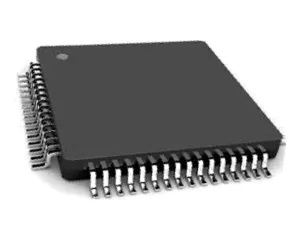
Microcontroller Types
Here are some of the most common types of microcontrollers:- 8-bit Microcontrollers: Microcontrollers with an 8-bit resolution are the most basic kind and are frequently used in remote controls, toys, and other tiny appliances. Although their processing and memory capacities are constrained, they are simple to operate and reasonably priced.
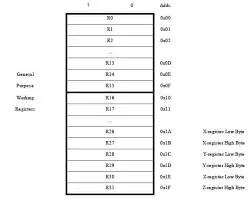
- 16-bit Microcontrollers: More sophisticated than 8-bit microcontrollers, they can handle more difficult tasks. They are frequently utilized in systems including industrial control systems, automotive systems, and medical equipment.
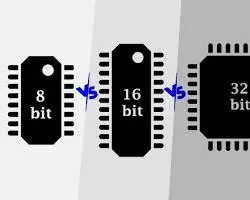
- 32-bit Microcontrollers: The most powerful and feature-rich microcontrollers available today are 32-bit models, which can process enormous amounts of data quickly. They are utilized in systems for gaming, multimedia devices, and sophisticated industrial automation.
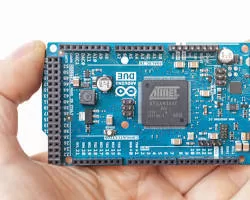
- Dual Core Microcontrollers: Microcontrollers with two processors are referred to as dual core microcontrollers. This enables them to carry out several tasks concurrently, which may enhance performance in particular applications. Due to their numerous advantages over single-core microcontrollers, dual-core microcontrollers are becoming more and more common. They are more expensive and complicated, though.
- ARM Microcontroller: Mobile devices, automotive systems, and industrial control systems all frequently employ ARM microcontrollers, which are based on the ARM architecture.
- PIC Microcontrollers: Microchip Technology produces PIC microcontrollers, which are widely utilized in a variety of applications such as home appliances, automotive systems, and medical equipment.
- AVR Microcontrollers: These Atmel Corporation-produced microcontrollers are frequently used in robotics, industrial control systems, and consumer electronics.
- Microcontrollers that are FPGA-based: These microcontrollers have processing capabilities that are incredibly flexible and adjustable because of the usage of field-programmable gate arrays (FPGAs). They are frequently employed in projects like high-speed networking, digital signal processing, and video processing.
What is PLC?
A programmable logic controller (PLC) is a small computer that has inputs for data and outputs for sending and receiving commands. A PLC's primary duty is to regulate a system's operations using the underlying logic that has been programmed into it. PLCs are used by businesses all over the world to automate their most crucial procedures.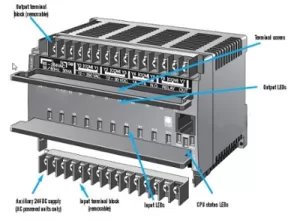
PLC Types
- Modular PLCs: Modular PLCs can have individual modules added or removed as needed. They are a fantastic option for applications that require a wide variety of I/O or that may need to be expanded in the future because of how flexible and scalable they are as a result.
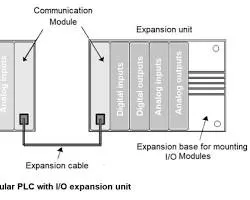
- Fixed PLCs: PLCs with a fixed number of I/O that cannot be extended are known as fixed PLCs. They are an excellent option for applications with a clear set of needs that won't alter in the future.
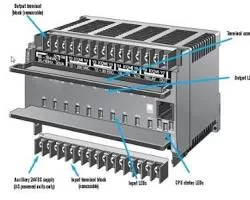
- Compact PLCs: Due to their portability and lightweight, compact PLCs are a viable option for applications that require less space.
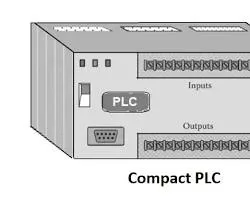
- Rack-mounted PLCs: PLCs that can be put on a typical 19-inch rack are known as rack-mounted PLCs. They are a fantastic option for applications that need a lot of I/O because they are simple to install and manage.
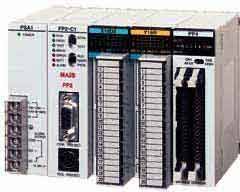
- Remote I/O PLCs: I/O modules in remote I/O PLCs are separated from the controller by a distance. They are therefore a good option for applications where the I/O must be placed in a risky or challenging-to-access location.
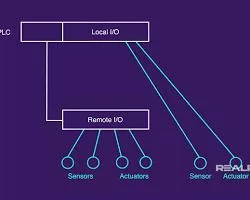
- Wireless PLCs: Wireless PLCs use wireless technology to connect to their I/O modules or other devices. This makes them an excellent option for applications that require wireless communication flexibility or don't have access to wired infrastructure.
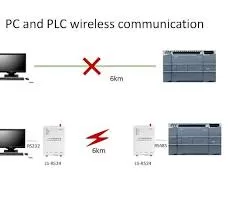
- Safety PLCs: Safety PLCs are intended to avert potentially dangerous situations. They are utilized in situations where safety is essential, including in the industrial and car industries.
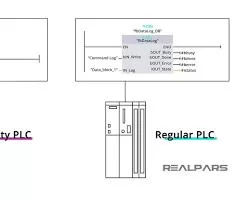
Video related to Microcontroller vs PLC
Comparison of PLCs and Microcontrollers
Here is a table that summarizes the key differences between PLCs and microcontrollers:| Feature | PLC | Microcontroller |
| Cost | More expensive | Less expensive |
| Complexity | More complex | Less complex |
| Programming | Hardwired | Software-based |
| Real-time performance | Better | Worse |
| Fault tolerance | Better | Worse |
| Flexibility | Worse | Better |
Applications of PLC and Microcontroller
Applications of PLC
- Petrochemical: PLCs are used in the manufacturing of chemicals, polymers, and other goods in the petrochemical industry.
- Biomedical: PLCs are used to operate ventilators and infusion pumps, among other medical equipment.
- Cement manufacturing: The manufacture of cement and other building materials is managed by PLCs.
- Oil and gas: Petroleum and natural gas production and processing are managed by PLCs.
- Manufacturing: A wide range of manufacturing operations, including assembly lines, packing equipment, and material handling systems, are controlled by PLCs.
- Process control: The temperature, pressure, flow rate, and other elements of industrial processes are managed by PLCs.
- Machine automation: Automation of machinery and systems, including robots, conveyors, and elevators, is accomplished through the use of PLCs.
- Building automation: The lighting, security, and HVAC (heating, ventilation, and air conditioning) systems in buildings are all controlled by PLCs.
- Transportation: PLCs are used in transportation systems to manage traffic signals, train and subway doors, lifts, and escalators.
- Packaging: In the food, beverage, and pharmaceutical industries, PLCs are utilized to manage the packaging equipment.
- Utilities: The power grid, the water supply, and the waste treatment systems are all under the management of PLCs.
Applications of Microcontroller
Microcontroller for Universal fields
- Home appliances: A wide range of household appliances, including washing machines, refrigerators, and microwave ovens, are controlled by microcontrollers. The appliances, as well as the display and user interface, are all controlled by them.
- Medical equipment: A vast range of medical equipment, including pacemakers, insulin pumps, and defibrillators, are controlled by microcontrollers. They are employed to keep an eye on the patient's health and administer therapy if necessary.
- Industrial automation: A wide range of industrial automation systems, including robots, conveyors, and machinery, are controlled by microcontrollers. They are employed to ensure product quality and to automate the production process.
- Consumer electronics: A wide range of consumer electronics gadgets, including smartphones, tablets, and TVs, are controlled by microcontrollers. They manage the display, user interface, and other features in addition to providing the devices with electricity.
- Telecommunications: A wide range of telecom equipment, including routers, switches, and modems, are controlled by microcontrollers. They are employed to manage data traffic and make sure the network is dependable.
- Military: A wide range of military systems, including weapons, vehicles, and aircraft, are controlled by microcontrollers. They are utilized to automate the systems and guarantee their effectiveness in challenging conditions.
Microcontroller for CubeSats
Small satellites called "CubeSats" are frequently employed for research or educational reasons. They typically contain a microprocessor, a power system, and a communication system, along with a few other standardized components. The CubeSat's tasks, including attitude control, data collecting, and communication, are managed by the microcontroller. Small, light, and low-power microcontrollers should be used since CubeSats need to take all of these factors into account. The Atmel ATmega328P and STMicroelectronics STM32F103C8 are two popular microcontrollers for CubeSats. These microcontrollers include a variety of capabilities that make them suited for CubeSat applications. They are also tiny, light, and low-power.Microcontroller vs FPGA
Field-programmable gate arrays (FPGAs) are chips that can be set up to carry out various tasks. It is composed of a grid of logic building blocks that can be interconnected to form unique circuits. Hardware description languages (HDLs), such as Verilog or VHDL, are frequently used to program FPGAs. Microcontrollers and FPGAs differ primarily in that the former are pre-programmed while the latter are reconfigurable. This means that whereas FPGAs can be customized to do numerous functions, microcontrollers can only be utilized for the single task for which they were developed. In embedded systems, for example, microcontrollers are frequently utilized in situations where cost and simplicity are crucial. FPGAs are frequently employed in signal processing and image processing, two fields where flexibility and performance are crucial.Microcontroller vs Embedded Systems
An embedded system is a computer system that has been created expressly for a given use. Usually, it is a part of a bigger system, like an automobile, a washing machine, or a medical apparatus. The functioning of the system and user interaction are frequently handled by embedded systems. Because microcontrollers are the fundamental components of embedded systems, they are fundamentally different from those systems. In most cases, an embedded system includes a microcontroller in addition to memory, sensors, actuators, and other parts. Typically, microcontrollers are employed in low-priced consumer electronics and other applications where cost and simplicity are crucial. Embedded systems are frequently employed in settings where performance and dependability are crucial, such as industrial control systems and medical equipment.Microcontroller vs Arduino
Arduino is an open-source electronics platform built on simple hardware and software. It aims to increase the accessibility of the use of electronics in transdisciplinary projects. Microcontrollers and a range of sensors and actuators are built into Arduino boards. The primary distinction between microcontrollers and Arduinos is that the latter are a particular kind of microcontroller that is intended for simple use and learning. The pre-programmed bootloader that ships with Arduinos makes it simple to upload fresh code to the board. They also provide several libraries that facilitate simple communication with sensors and actuators. Although Arduinos can be built using microcontrollers, Arduinos are not microcontrollers. The microcontroller, the bootloader, the libraries, and the development environment are all part of the complete platform that is an Arduino.Conclusion
Microcontrollers and PLCs are both crucial components used to control electronic equipment. The one to employ depends on the particular application because they have various types and uses. A PLC is an excellent option if you're searching for a device that is durable, dependable, and has good real-time performance. A microcontroller is a fantastic option if you're seeking a less-priced, adaptable, and simple-to-program gadget. What is Microcontroller UnitMicrocontroller TypesWhat is PLCPLC TypesVideo related to Microcontroller vs PLCComparison of PLCs and MicrocontrollersApplications of PLC and MicrocontrollerMicrocontroller for CubeSatsMicrocontroller vs FPGAMicrocontroller vs Embedded SystemsMicrocontroller vs ArduinoConclusion
Related Articles
- ·Stratix 10 VS Stratix V: Which FPGA is Right for Your Next Project?
- ·Intel Xeon Platinum 8454H vs AMD EPYC: Which Reigns Supreme?
- ·A Deep Dive into the AMD EPYC 4564P Processor
- ·MSP430F5438A vs MSP430F5529: A Detailed Analysis of Their Capabilities
- ·Comparing MSP430F6659 and MSP430F5419A: Which One is Right for Your Project?
- ·Exploring the Features of MSP430F5529 and MSP430F5638 Microcontrollers
- ·Demystifying 20 Microcontroller Projects for Beginners
- ·Unveiling the Ultimate Guide to Microcontroller Programming
- ·4680 Battery: Unveiling the Power Potential of the Next-Gen Cell
- ·Exploring the Case Studies on Arduino Applications
Populer Posts
